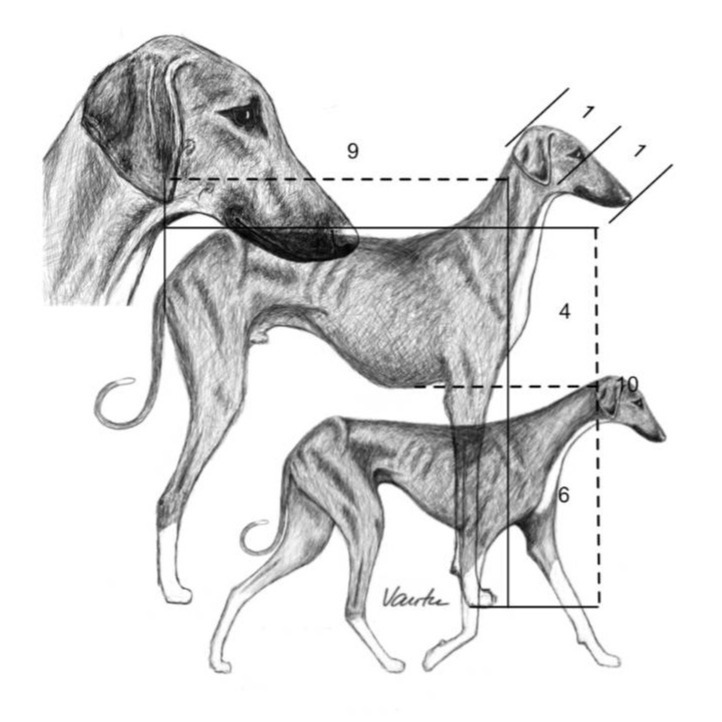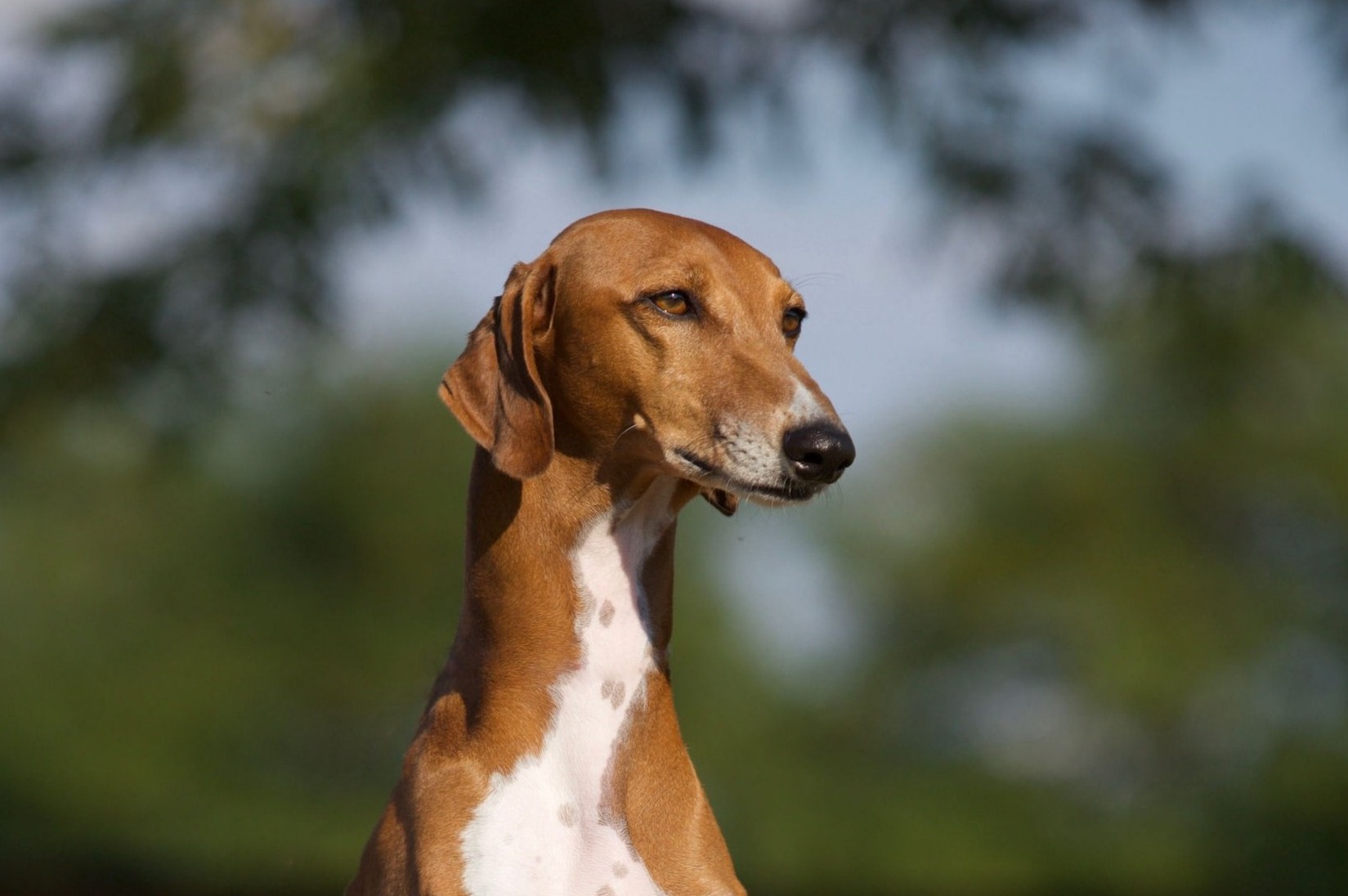BEHAVIOR / TEMPERAMENT: Quick, attentive, distant, can be very reserved with strangers, but it can be gentle and affectionate with its family, and people whom it is willing to accept.
The Azawakh is closer to the proud <domestic wolf> than to the fully obedient dog. One must have a strong personality to be accepted as the master. It is hard to believe for those who have never had an Azawakh, but it can be very affectionate with its owner, when no <enemy> is within sight. True, this dog is very suspicious, but personally I like this trait. It might take some days before an Azawakh habituates itself to a new person, and even more for its acceptance [of the new person] in its environment. The Azawakh is the one that makes the approach and never the opposite. This is the reason it is not good to touch them when we judge them, especially the young ones, because it stresses them and makes them detest dog shows from the very beginning. If a judge cannot understand how or why anyone would accept this behaviour in a dog, it is only because he has never had an Azawakh. Personally I cannot imagine a totally and unconditionally obedient Azawakh, or one which is too friendly. I like this temperament, and this is one of the reasons I love this breed. Nobody likes fallen beauties, but we all love the mystery and dignity of natural beauties, even wildlife. Let’s keep them pure.
HEAD: Long, fine, lean and chiselled, rather narrow, without excess.
CRANIAL REGION:
Skull: Almost flat, rather long, its width should be significantly less than half the length of the head. The line of skull and the bridge of the muzzle are sometimes slightly divergent. The superciliary ridges and the frontal furrow are slightly marked. The external occipital protuberance is clearly pronounced.
Stop: Very slightly marked.
FACIAL REGION:
Nose: Black or dark brown colour is obligatory; the nostrils are well opened.
Muzzle: Long, straight, tapered without exaggeration towards the end.
Lips: Thin lips tightly fitting, colour is black or dark brown, no hanging lips.
Jaws/Teeth: Jaws are long and strong; scissor bite. Complete set of teeth.
Cheeks: Flat.
EYES: Almond eyes, rather large, slightly oblique palpebral opening, colour is dark, sometimes amber, never blue. Eye rims well black or dark brown pigmented.
EARS: Set quite high. They are fine, always drooping and flat, broad based, lie flat against the cheeks, never "rose ear".Their shape is that of a triangle with a slightly rounded tip. Their base
raises when the hound is attentive.
NECK:
Good reach of neck which is long, fine and muscular, slightly arched. The skin is fine and does not
form a dewlap.
BODY:
Top line: Straight, approximately horizontal or slightly rising from the withers towards the point of the hips. Hips clearly protruding and placed at the same height or higher than the height of the withers. Withers: Distinctively prominent.
Loin: Short and dry.
Croup: Oblique (ideally 45 °).
Chest: Deep, well-let down almost to the elbows, sternal region gently narrowing. Fore chest fairly narrow. Ribs long, slightly visible, gently and evenly sprung.
Underline and belly: The sternal arch is pronounced. The underline rises smoothly into the belly which is tucked up very high.
The withers are protruding like the hip bones, which must stand at the same level or higher than the withers.
The hip bones placed below the withers is a desqualifying fault.
In a dog with less subcutaneous tissue, the loin is sometimes more arched than usual and this should not
be penalised so long as in movement the dog retains a good, straight top line.
The croup does not have an accentuated slant but is definitely oblique, and more often the fault is too
horizontal a croup rather than one which is too steep.








